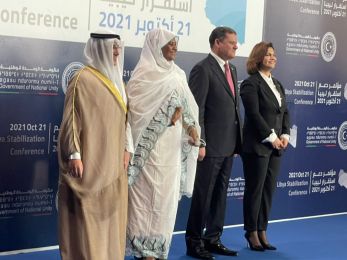Three years of flatlined progress on HIV treatment and prevention affect 2.7 million youth
New York, US (PANA) - Some 110,00 youth under age 19 died last year from AIDS-related causes, the UN Children’s Fund (UNICEF) has said, noting that coupled with 310,000 newly infected, the total number of young people living with HIV stands at 2.7 million.
Three years of flatlined progress on HIV treatment and prevention affect 2.7 million youth, it said.
Ahead of World AIDS Day on Thursday, UNICEF warned in its latest global snapshot on children, HIV and AIDS that progress in HIV prevention and treatment has nearly flatlined over the past three years, with many regions still not at pre-pandemic service coverage.
“Though children have long lagged behind adults in the AIDS response, the stagnation seen in the last three years is unprecedented, putting too many young lives at risk of sickness and death,” said UNICEF Associate Chief of HIV/AIDS Anurita Bains.
This comes on top of an existing and growing gap in treatment between adults and children, adolescents, and pregnant women.
“Children are falling through the cracks because we are collectively failing to find and test them and get them on life-saving treatment,” she said.
“Every day that goes by without progress, over 300 children and adolescents lose their fight against AIDS.”
Despite accounting for only seven per cent of overall people living with HIV, children and adolescents comprised 17 per cent of AIDS-related deaths, and 21 per cent of new HIV infections last year.
Unless the drivers of inequities are addressed, UNICEF warns, ending AIDS in children and adolescents will continue to be a distant dream.
However, the snapshot points out that longer-term trends remain positive.
New HIV infections among children under age 14 dropped by 52 per cent from 2010 to 2021, and new infections among 15- to19-year-olds also dropped by 40 per cent.
Similarly, coverage of lifelong antiretroviral treatment (ART) among pregnant women living with HIV increased from 46 per cent to 81 per cent in a single decade.
While the total number of children living with HIV is on the decline, the treatment gap between children and adults continues to grow.
In UNICEF’s HIV-priority countries, ART coverage for children stood at 56 per cent in 2020 but fell to 54 per cent in 2021.
Several factors were responsible for the decline, including the pandemic and other global crises that have increased marginalisation and poverty.
However, the failure also reflects waning political will and a flagging AIDS response in children.
Globally, only 52 per cent of children living with HIV had access to treatment, which has only marginally increased over the past few years.
Among all adults living with HIV, meanwhile, coverage at 76 per cent was more than 20 percentage points higher than among children.
And there was an 81 per cent gap between children and pregnant women living with HIV.
Moreover, the percentage of children living with HIV under age four who are not on ART climbed to 72 per cent last year – as high as it was in 2012.
-0- PANA MA 29Nov2022






